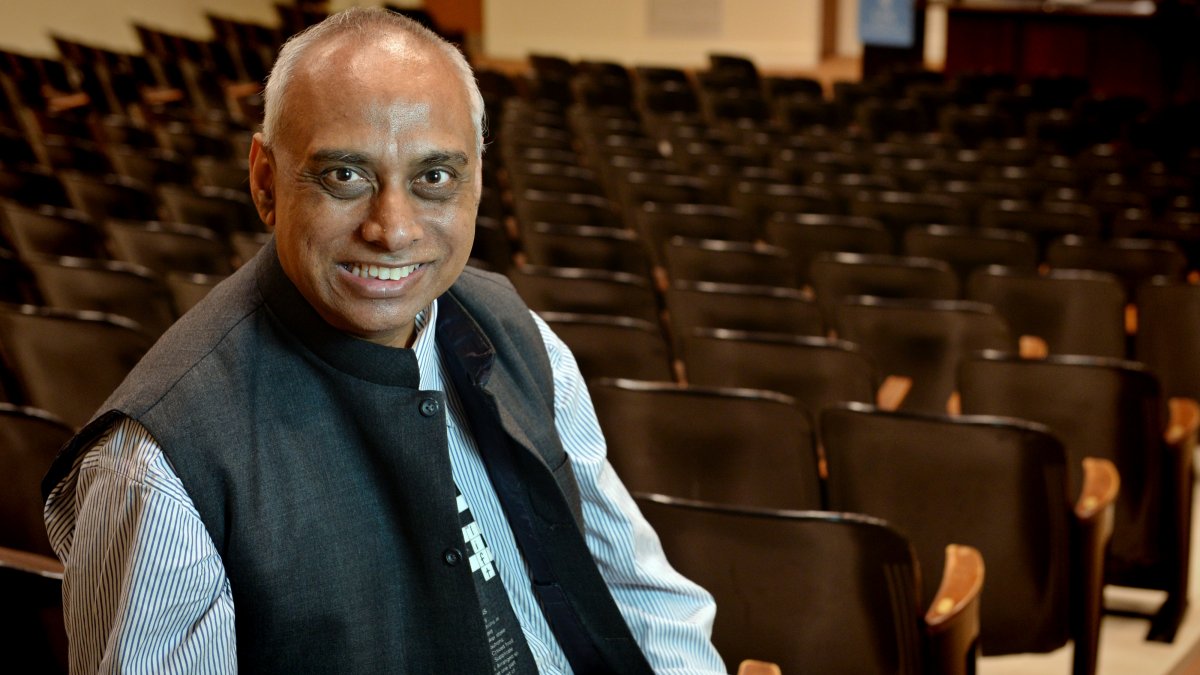From competition to contract
UNC School of Journalism and Mass Communication professor Deb Aikat discusses his new book, for which he won a contract to write in a book proposal competition.

For Deb Aikat, the peer review process is full of both joy and sorrow — but he knows it’s a necessity for the publication process.
For his new book “Who’s a Journalist? News in a Digital Age,” the professor at the University of North Carolina at Chapel Hill’s School of Journalism and Mass Communication took his peer review to a new level by entering his proposal in a competition against other media researchers.
Aikat’s decision has paid off in more joy than sorrow.
On June 30, the Association for Education in Journalism and Mass Communication and Peter Lang Publishing announced that it would be extending Aikat a book contract as the winner of the Scholarsourcing Series competition.
AEJMC has partnered with Peter Lang Publishing for the new Scholarsourcing Series, which aims to re-imagine how scholarly books are proposed peer-reviewed and approved for contract.
In the competition’s inaugural year, AEJMC invited organization members to submit book proposals that are relevant to journalism and communication. The submissions were then reviewed and voted on by other AEJMC members.
After the peer review, an editorial committee reviewed top proposals; the top two earned book contracts with the publisher.
Aikat said the competition allowed him to run his idea past fellow media researchers to vet research and to receive feedback from colleagues.
“A book project is a major investment of time and energy,” he said. “I wanted to test market my book idea among AEJMC’s vibrant academic milieu of more than 3,700 educators, students and practitioners worldwide.”
We recently caught up with Aikat to discuss his upcoming book:
How does it feel to have earned one of the first book contracts in the Scholarsourcing Series?
I feel honored and humbled to find my research work recognized in the inaugural AEJMC-Peter Lang Scholarsourcing Series.
My research seeks to expand human knowledge and benefit society by investigating and theorizing the emerging role of media in the digital age. Major media breakthroughs reach us at warp speed through Facebook messages, emails, tweets and texting through an ephemeral media stream. Our field needs a comprehensive book to encapsulate intriguing media trends, analyze the theories that explicate such developments and present a research repertoire that investigate fundamental problems in our field.
What does “Who’s a Journalist? News in a Digital Age” focus on?
My friend, James L. Carey, a renowned communications theorist at the Columbia Graduate School of Journalism and former communications dean at Illinois, considered journalism “our collective campfire storytelling.”
Carey observed in 1997 “journalists are constituted in practice.” The 21st Century media landscape has empowered media consumers with significant abilities to mimic journalistic practices. People are sharing news on Twitter, covering their communities on Facebook, live-streaming from public events, breaking news by email and authoring insightful blog posts on racial tensions.
Some of these people are what we’d consider traditional journalists working on new platforms, but many are not. Such developments have led to worldwide debates on “who is a journalist and why.”
My book project, “Who’s a Journalist? News in the Digital Age,” will draw on original research to explore the evolving roles of journalists and journalism.
Over the course of time, how has the answer to “Who’s a journalist” changed?
As the Internet continues to reshape almost all aspects of our world, no institution has been more profoundly altered than the practice of journalism and distribution of information. As Eric Newton of Knight Foundation stated in 2013: “Without a doubt, the digital age has turned traditional journalism upside down and inside out. Almost everything is in flux: Who a journalist is, what a story is, when and where the news arrives and how we deal with newly interactive communities.”
The concept of who’s a journalist and what’s news in the digital age is being constantly re-defined in our society today. For instance, with one short Instagram video post captioned “Surprise!” in December 2013, American singer, songwriter and actress Beyoncé stunned her fans, the news media and the world by releasing a new album, Beyoncé,solely on iTunes with absolutely no advance notice. That was all it took to spread the news.
Debunking conventional marketing wisdom that recommends music releases to build buzz over months, Beyoncé took a bold move by not doing any “real marketing” for her new music album. Instead, she relied on her massive social media following (8 million on Instagram, 53 million on Facebook) to control the message and spread it. In the statement announcing the album’s release, Beyoncé stated it was “an unprecedented strategic move”, and that this was music “stripped of gimmicks, teasers and marketing campaigns” to reach her audience.
How does this book tie into your work at Carolina?
In my 20 years as a faculty member at UNC-Chapel Hill, I have demonstrated a strong commitment to teaching and researching issues that empower our students and academic colleagues.
This book will encapsulate original research that has been enriched by research wisdom of colleagues and students who comprise Carolina’s research-intensive community of scholars. The book will also draw upon my work on a 2014-15 Scripps Howard Foundation Research Grant to foster academy- industry ties.
The role of media is evolving worldwide. For instance, I explored the diverse media models in Russia during a research trip in May 2015. The Russia trip enabled me to explore the role of journalists and journalism at this troubled time of press freedom in the Putin era.
This books draws upon my research that theorizes the impact of communication technologies and how digital media have transformed the way we work, live and play. I also study media innovations in news media organizations, workplaces, homes, businesses, educational institutions and the government.




